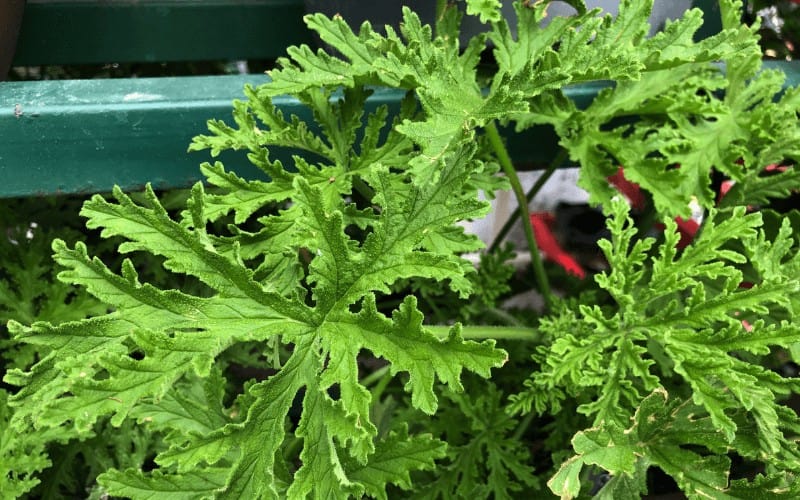A true citronella plant is a grass plant from the family cymbopogon nardus or cymbopogon grown purposely as mosquito repellents. They are ornamental plants with a peculiar scent referred to as the citronella scent hence its name.
So, why is my citronella plant dying? You should have it in mind that most plants thrive best when taken care of properly, and a citronella plant is no different.
The citronella plants, for instance, thrive best under sunlight. These plants prefer at least six hours of sunlight every day thus, it is recommended that it is placed in a sunny spot.
This post will also discuss other reasons why your citronella plant is dying and ways you can prevent that from happening.
Table of Contents
Why is My Citronella Plant Dying?
Now, it is not news that plants die when not being treated right.
While you might not be fully aware of the exact causes of a plant's death is often related to environmental and artificial factors.
Here are some reasons your citronella plant is dying:
1. Overwatering
These plants require high moisture but are intolerable to overwatering. Excess watering causes the leaves to turn yellow before shedding off from the stems.
Hence, you should only take note of water at intervals. Watch out when the soil surface is dry enough.
Too much water causes the leaching of essential nutrients from the soil and causes the plant to be underfed.
2. Excessive Sunlight
These plants do not thrive well when exposed to direct sunlight for prolonged hours. A natural shade that allows for sunlight penetration is advised for your Citronella plant's optimum growth and performance.
3. Soil
This is another factor that can influence the death of your citronella plant. These plants can heartily grow in several well-draining soils. For optimum performance, choose a well-drained soil option that relatively rich in organic matter.
Or one can merely add a few in well-drained and compost to the topsoil. The most important of the soil requirements are that they are well-drained.
4. Potting
Considering that these plants multiply, they are also expected to need to be re-potted repeatedly. Your plant's first pot's lowest requirement is to be in the least of all a foot in diameter.
Ensure that the base has a surplus of drainage holes to avert root rotting. If you observe that the roots are becoming cramped, transport it to a larger pot than the current living space.
How To Ensure a Healthy Citronella Plant
A well-scented citronella plant with bouncy green leaves point to a singular fact; that your citronella plant is flourishing. With the right care, you will have a beautiful and healthy citronella plant.
Follow the steps outlined here to ensure that you have a healthy plant.
- Let your plant bask up about six hours of sunlight per day.
- Retain your citronella on the arid side, only water when the top inch of soil begins to dry out.
- Ensure to select a pot that has considerable drainage.
- The temperature should remain around the range of 15 and 21 degrees Celsius without alterations.
- Trim your plant in weekly intervals to avert cramping of the vegetation.
How Long Does A Citronella Plant Live For?
Citronella grass plants would survive outdoors all year-round as an annual plant in the USDA Plant Zones 10 -13, namely a more significant part of the West Coast, the Southwest, and the Southeast of the United States.
In other zones, they can be brought indoors during the onset of winter or left outside as a perennial. It is an evergreen perennial plant in zones 9 to 11; citronella thrives as an annual where freezing conditions occur.
The citronella plants respond well to trimming. So, don’t hesitate to prune overgrown branches as this goes a long way to help the plant's productivity.
Signs That Your Citronella Plant Is Sick
Abrupt environmental factors such as temperature, humidity, and soil conditions can bring about the citronella plant's poor growth.
The healthy state of the plant is dependent on the stability of all factors being equal.
When this is not adhered to, the citronella plant becomes sick and unhealthy and might die off in the long run.
Some of the time, farmers are oblivious of the signs that these plants exhibited when they deviated from normal physiological activities.
The following are the indications that your citronella plant is sick:
1. Brown Leaves
Brown leaves might result from a lack of light; watch out for the lower leaves dying off while new growth located at the upper branch tips seems to be reaching for the window or light source.
If you notice this, then there’s a case of inadequate light, and you would need to change the plant's positions to a more lit window or light supply.
2. Yellow Leaves
Yellow leaves are also due to inadequate light. Keeping in mind that citronella plants thrive best under sunlight, you must place the plant in a sunny spot in your home.
3. Spots/Coloration
Instead of a fully colored brown, there are instead spots of brown on the leaves. When you notice this, your plants are sick from overwatering, and you should let the plant dry out before the next watering. Making drainages under the containers would do a lot of good too.
Read Also:
- Should I Cut Off Brown Palm Leaves?
- Why Is Tree Leaves Turning Brown?
- How to Save a Dying Oak Tree
- Why Is Plant Stems Turning Brown?
- How to Save a Dying Cherry Tree
Conclusion
Citronella plants can also be grown in the yards and gardens as an ornamental crop for beautification.
Citronella plants can live as long as a year despite weather conditions and climate changes when kept under conducive conditions.
You might then wonder, why is my citronella plant dying? Following the guidelines provided in this post will ensure that you will have a beautiful and flourishing citronella plant.





